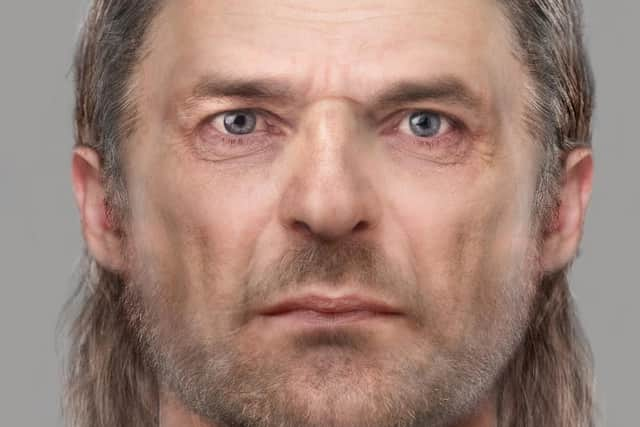Blair Atholl Man: The Pictish-era traveller who enjoyed a diet 'rich in pork'
Fascinating new details of Blair Atholl Man, whose remains were discovered in the town in the 1980s, have been revealed, with analysis shedding new light on his origins and lifestyle, as well as the movement of people into this important area of Pictish power, which was ruled by its own king.
Early research on Blair Atholl Man found he was around 5ft 10 inches tall, muscly and physically fit when he died during the 5th or 6th century, aged around 45. He was relatively old for the period and died possibly from poisoning from a dental abscess.
Advertisement
Hide AdAdvertisement
Hide AdNow following isotope analysis of one of his rib bones and a molar, it is thought Blair Atholl Man originally came from Mull, Iona, Tiree, Coll, Skye or even parts of Ireland.


At the time, the area – then known as Folta – was dotted with forts, homesteads and burials with nearby Dunkeld an early emerging centre of Christianity.
St Columba is known to have visited the area and the new analysis has led researchers to believe Blair Atholl Man may have potentially arrived as an early missionary or ambassador.
Professor Kate Britton, lecturer in archaeological science at the University of Aberdeen, co-authored a report on the latest findings.
She said: “We were so excited that our data indicated a westerly origin. Adomnán wrote about Columba and Christian missionaries in this area, but more than a century after those events occurred.
"This is often the issue with historical sources. However, our data provides direct evidence of these journeys being made contemporary to, or even before, Columba.
“The results tell us that people in this period were mobile in their lives over fairly considerable distances and – importantly for this particular area – provide direct links between places like Ireland and Iona and the heart of Scotland in the Age of St Columba.”
She added: “We really cannot be sure what bought him there, but perhaps he was an early Christian missionary himself or perhaps even a sort of early ambassador.”
Advertisement
Hide AdAdvertisement
Hide AdBlair Atholl Man’s links to the west were revealed by tests on his tooth, which can identify the geographical origin of food and water consumed during childhood.
Analysis of collagen taken from the rib found his diet was rich in pork or wild boar and perhaps domestic fowl.
One reading of the test results is that he arrived in Perthshire in the years immediately before his death, although further analysis is required to confirm this. Although not originally from the area, he was given a Pictish-style burial.
Prof Britton said: "I think it’s also important to consider that who would or wouldn’t have been considered Pictish or local or ‘non-local’ might have been very different at the time than it is today.
“His manner of burial and his diet make him very similar to other ‘Pictish’ individuals we have studied, whatever his childhood origins.”
Prof Britton, who worked on the research alongside Mark Hall, collections officer at Culture and Perth Kinross and several Aberdeen colleagues, said ancient DNA analysis was recently carried out on Blair Atholl Man and could help pinpoint his ancestry.
A message from the Editor:Thank you for reading this article. We're more reliant on your support than ever as the shift in consumer habits brought about by Coronavirus impacts our advertisers.
If you haven't already, please consider supporting our trusted, fact-checked journalism by taking out a digital subscription.
Comments
Want to join the conversation? Please or to comment on this article.
